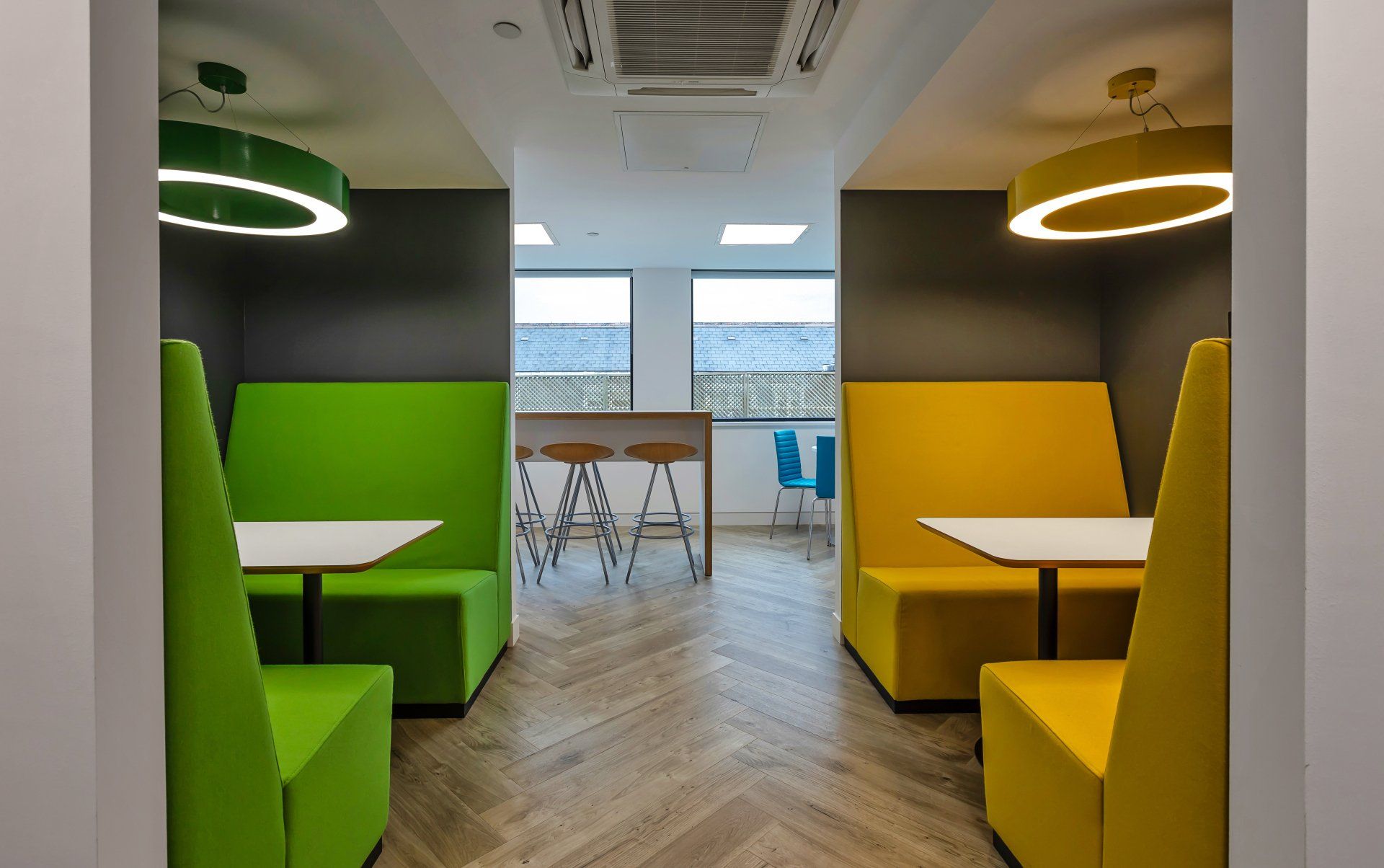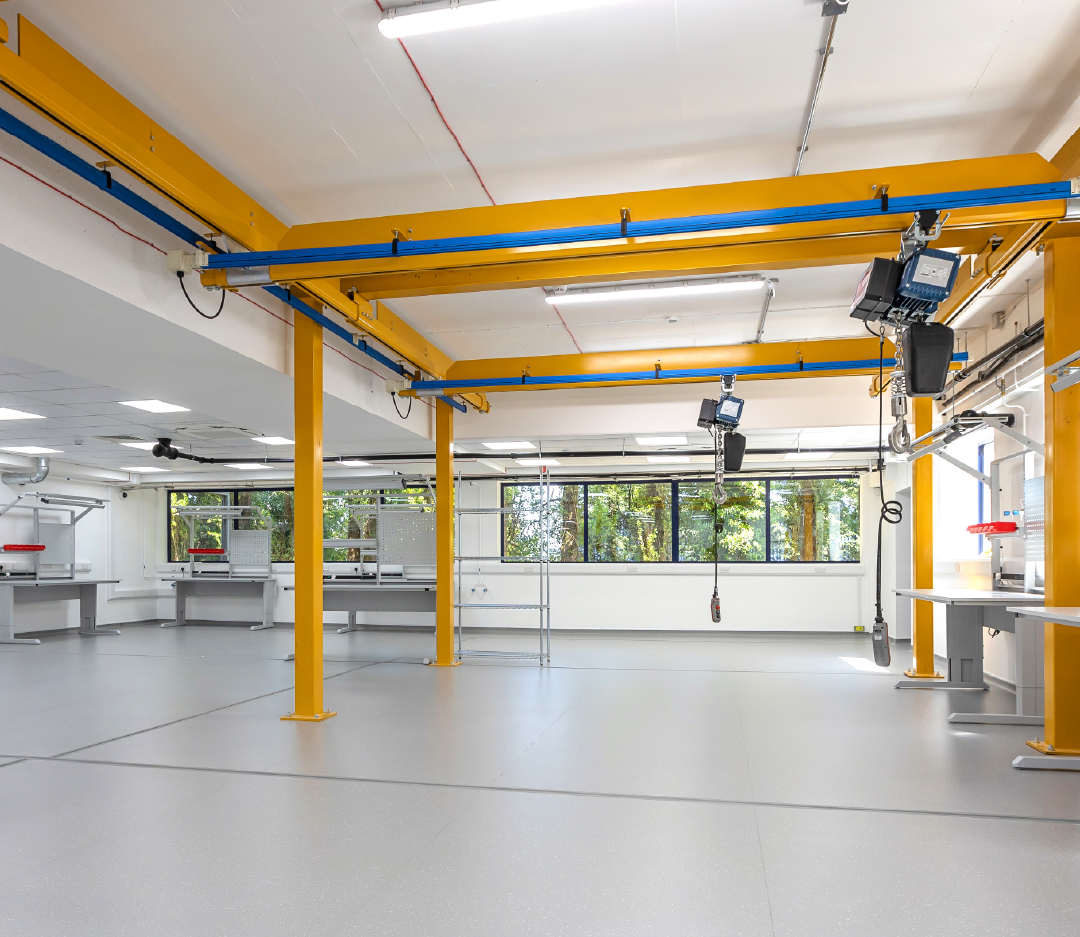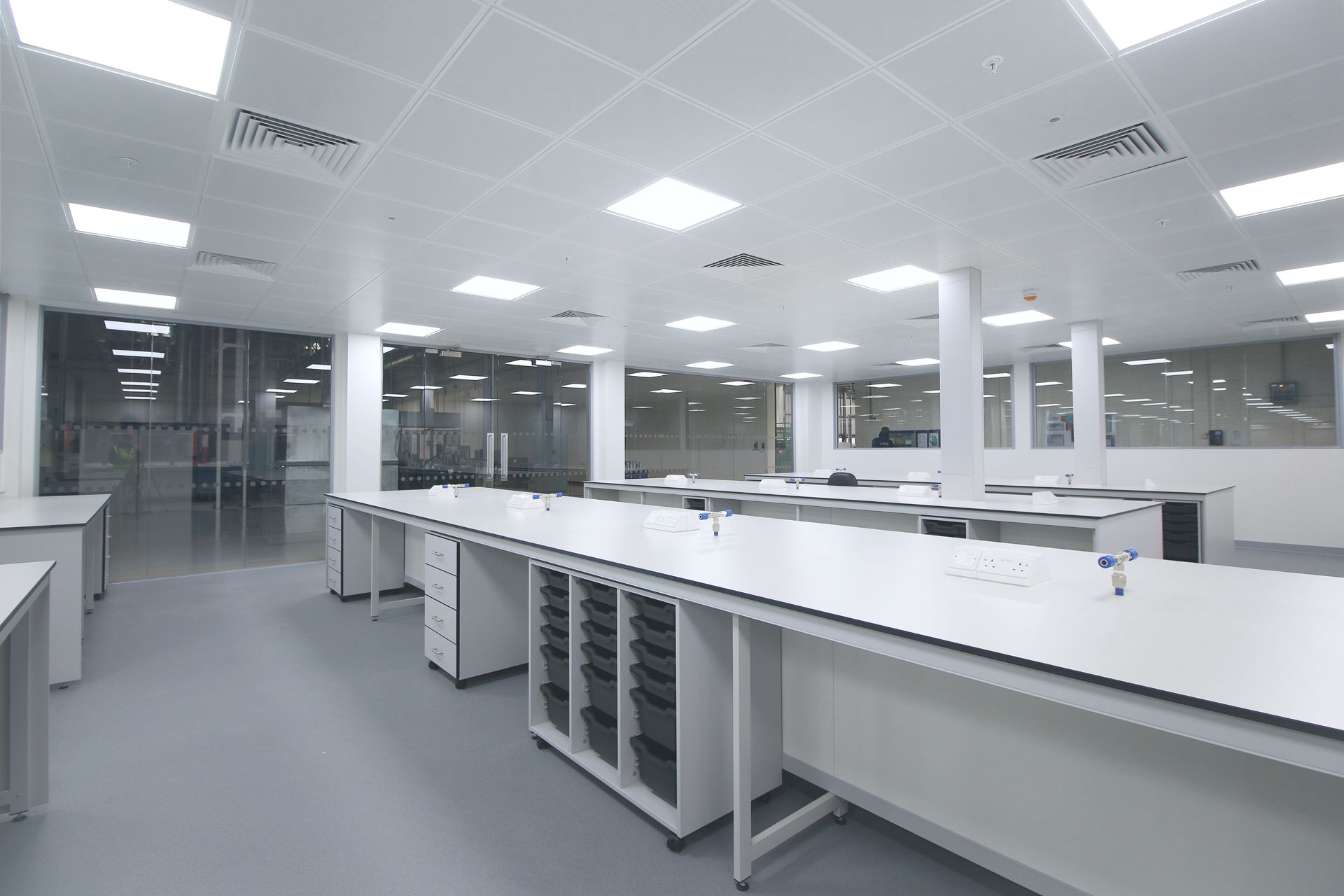When it comes to creating a productive working environment, considering office acoustics is essential. Noise both disrupts work and hinders productivity, making it one of the most common complaints from office workers.
We undertake careful
planning to assess the acoustics of workplaces and consider the impact of sound. By understanding the different types of sound, and the different ways to deal with noise, we can create productive and efficient working environments for every industry,
office and employee.

Different Types of Sound
A common misconception is that noise is mainly a result of people talking, however there are many sources of noise in an office environment that can cause distraction and increase stress.
Some of the most common office sounds include:
- Movements of chairs and furniture.
- The sound of people moving around the space.
- Human noise, such as talking, coughing, and sneezing.
- Tech noises such as printers, typing and computer sounds.
- Telephones ringing.
All of these different causes of noise must be considered to create an effective, well thought-out workspace.
The ABC Solutions to Improving Office Acoustics
In the same way that there are different types of sound, there are many different ways to deal with it too:
Absorb
‘Absorbing’ noise refers to minimising noise by absorbing it into porous materials that can catch and hold the sound, rather than bouncing it back as a hard surface would. For this, we would consider installing products on the walls or suspended from ceilings in order to catch the sound as close to the source as possible. There are various products available for this, such as wall decorations, plants or suspended ceilings.
Block
‘Blocking’ excess noise refers to when a barrier is introduced between the noise and the individual to block the sound travelling. This can be achieved through strategic placement of barriers, partitions, walls or even furniture such as pods or phone booths, which will help to block noise.
Cover
‘Covering’ noise means that the unwanted sound is masked by new, computer-generated sound. These are usually natural noises that people are used to hearing, such as white noise or nature sounds. Although this doesn’t eliminate noise completely, unlike the other solutions, covering makes the noise disappear enough so that it doesn’t cause distraction.
This is particularly useful for situations where privacy, rather than noise, is the main cause of concern. If the frequency of the introduced sound matches that of the voices in the room, it becomes harder to distinguish between the two and supports concentration for more focused work.
Our team of design experts can provide advice and planning on how to optimise your workplace acoustics, implementing different solutions to optimise your workspace.
We undertake space planning prior to fit out, which includes detailed analysis of how your workplace will be used, taking into account where people will be working and how they will move around the office. This allows us to analyse sound levels and where sound will travel, in order to select the best layout and furniture for your workplace.
Find out more or
book a visit to our showroom.
View more insights: Office Design I Industrial Property I Laboratories I Wellbeing & Productivity I Company Updates
Join Our Mailing List
All data is handled inline with our Privacy Policy and you may unsubscribe at any time.





